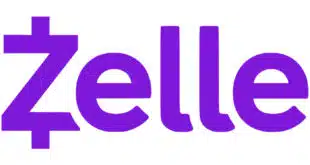With FedNow joining RTP in the race for real-time payments, a hugely practical service called request for payments could take off.
If you’re not a payments geek, you could be forgiven for wondering what all the fuss was about when the Federal Reserve announced in July that its real-time payments network, FedNow, had opened for business. If you are a payments geek, you cannot be forgiven for not realizing how FedNow might have changed the payments world forever.
Here’s why.
According to the Faster Payments Council, there are an estimated 150 faster-payment use-case development projects under way with banks, merchants, corporates, and third-party providers. They’re crafting real-time payment solutions for long-festering but unaddressed problems involving paper checks, wires, cards, and even electronic checks.
When brought fully to market, the digital transformation of these slow, outmoded, and expensive forms of payment could generate tens of billions of dollars a year in savings for users and providers. On top of that, real-time payments promise to be much safer. What’s not to like?
The problem is, until FedNow turned on its lights in July, all that promise and potential looked slated to take a long, slow, and deliberate path to market reality. That’s because FedNow’s main competitor, the Clearing House (TCH)’s Real-time Payment (RTP) system, has taken a more deliberate approach to what needs to be changed in payments and how quickly those changes need to take place, restricting use cases that can be addressed with its new, highly flexible and adaptable Request for Payment (RfP) mode.
But when FedNow opened its doors July 20, no such restrictions for its RfP mode were apparent. And that means game on for payments innovation after all.
How RfP Works
So, just what is RfP? Well, most real-time payment systems use a payment mode called credit-push, where payment is made in a transfer from one user’s bank account to that of another, including to and through another network, such as a card network. Today, there are six prominent providers of credit-push real-time payments—which are now a part of the U.S. payments landscape: TCH RTP, Visa Direct, Mastercard Send, Venmo, Zelle, and, of course, FedNow.
Credit-push is hardly an innovation. It has existed in the ACH network for a decade, and at TCH since 2017. But it is proving handy and efficient for the mostly business customers who use it. RfP, on the other hand, is new, and harbors radical potential for streamlining almost unlimited ways to pay—especially with consumer users.
RfP’s flexible design can accommodate a host of applications, from earnest money deposits on mortgage loans to funding online-gaming accounts to point-of-sale payments (more on that later).
How does RfP work? The user agrees (typically on a biller’s Web site, but also at the physical point of sale, with the service accessed through a URL-bearing QR code) to be billed for payment of an agreed-upon value and designates the bank account to be billed.
The billing entity (typically a corporation, or government entity, or even a merchant) then submits an RfP to its bank, noting the user’s bank, identification, and amount. Those two banks then complete the payment transaction, which is settled on the RTP or FedNow network.
Current RfP protocols involve a series of messaging and processing steps more extensive than, say, those for card or ACH payments. But a crop of innovators has already emerged with ways to optimize these exchanges and minimize the time it takes to complete them.
So funding can be virtually instantaneous, and user recourse is highly limited, meaning good funds are indeed consummated in real-time, every day, 24 hours a day. An RfP transaction on TCH’s RTP network today encompasses a round-trip, incurring a network cost of about a dime. Today, on FedNow, that RfP costs just a penny. Hence, all the excitement.
If, as executives of both networks have stated at various times, “we will take any payments our banks want to process,” RfP stands to become a huge resource for payments innovation, filling new use cases, such as title and escrow payments, that are still laboring with paper checks and wires after decades.
That message hasn’t been lost on most users of today’s payment types. These include corporate customers looking to take advantage of digital technology with electronic wallets moving funds from bank account-to-bank-account (A2A). Or big retail merchants, who are looking to move beyond ACH for scalable A2A alternatives to card payments.
A Conservative Approach
But TCH and FedNow have taken very different approaches to RfP’s emerging role as a “Trojan Horse” of innovation.
TCH has been experimenting with RfP for more than a year, finally announcing Aug. 2 that it was officially supporting RfP—albeit with just a few conservative use-cases—owing to the network’s concern over potential fraud risks and how to allocate the associated liabilities.
Quoting from TCH’s announcement, the initial use cases are:
- Consumer Bill Pay: “Companies that provide recurring consumer services, such as utilities, can use RfP to request payment for their services;”
- Business to Business Payments:
- Businesses can pay suppliers, business partners, contractors, freelancers or other third parties using RfP;”
- Payroll providers can send RfPs to [their] corporate customers so they can fund payroll on the same day that employees are paid, rather than 2-4 days prior to payday;”
- Account to Account (A2A): “RfPs can be used by individuals to request transfers between bank or brokerage accounts that are owned by the same person. For example, brokers can send an RfP to customers so they can transfer money from their bank account to their brokerage account instantly to enable immediate trading.”
Of particular concern to some of the biggest banks at TCH (which is owned by nearly two dozen of the largest financial institutions in the country) is the potential for fraud emanating from the very digital-wallet providers and A2A schemes corporate and retail customers are seeking to use.
Indeed, according to some participants on TCH’s governing committees deliberating in recent months over this issue, some of the big bank owners were not ready to entertain any other options than funding of brokerage accounts.
These big banks were okay with digital-wallet offerings by regulated financial institutions (including PayPal, which processes Venmo transactions through RTP via Chase). But they reportedly rejected RfP use-cases for retail POS payments (i.e., those competing with cards) and possible use by non-regulated, non-bank networks (e.g., Apple/Goldman Sachs).
On the borderline, but under observation, were wallet and A2A innovations in some morally sensitive areas such as online gaming (and even cannabis).
TCH appears to be toeing a careful line with these fast-growing (and potentially massive) new payments markets. Starting small with RfP and seeing what happens appears to be the current TCH strategy:
“As market adoption grows and RTP participants, billers, and payers gain experience with RfP, the permitted use cases on the RTP network are expected to expand to encompass all types of traditional and digital payment experiences. Learnings from these early adopters will be critical to that expansion and wide-scale adoption of RFP,” the network said in its announcement.
FedNow’s Chance
That conservative approach leaves FedNow with an opportunity to run down the wide-open field with an expanded set of RfP use cases—if and when its initial cadre of participating banks chooses to support them.
RfP capabilities were available at FedNow’s launch. And a number of banks and service providers are indeed scurrying to develop new applications and solve new use cases with the new network’s RfP protocol.
It remains to be seen what the ultimate pricing will be to users, as banks and service providers will no doubt mark up real-time payment offerings at both networks. According to several corporate users, current RTP offerings are generally priced at three to five times ACH rates—for example, 75 cents to $1.00 for real time, versus 20 cents to 25 cents for ACH. And FedNow will no doubt be very sensitive to its own banks’ concerns about security and liabilities.
Moreover, the Fed has consistently maintained for many months that it’s open to what its banks want to do in terms of innovations, explicitly calling out the potential for POS use-cases—when its banks have tooled up for RfP and are ready to cater to corporates and retailers.
For their part, big retailers say they will come on board FedNow when its participating banks provide enough coverage, and when RfP solutions can handle the essential area of handling product returns and refunds. So the jury is still out on how quickly real-time payments will actually impact current payment streams.
Nonetheless, the clear contrast in the philosophies of these two key networks on the pace for accommodating and supporting payment innovation in the wake of relentless pressures to digitize the transaction economy offers the clearest choice yet for enlightened competition.
Such competition was the promise when—against big-bank arguments that the United States didn’t need two real-time payment systems—the Fed decided the market needed FedNow after all. So Request for Payment (RfP) debuts in a payments industry that has sorely needed better ways to pay.
—Steve Mott is a payments consultant is a board director of the Faster Payments Council.





